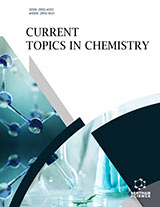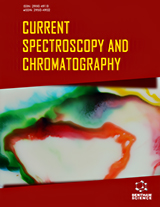Abstract
Background: Excessive active oxygen will suppress the antioxidant defense system, resulting in a series of negative effects. Antioxidant substances in the diet can protect important biological molecules by mitigating the harm caused by oxidative stress and reducing the occurrence of chronic diseases related to aging. Therefore, simple, reliable and rapid detection methods for screening potential antioxidants in the diet have become very important.
Methods: 1.0 g scented tea was added into 25 mL boiling water, and the extracting solution was filtered through filter paper by normal funnel after 10 min stirring extraction. After cooled to room temperature, the filtrate was diluted with water. Then, 100 µL of the scented tea extract was added into 300 µL of GNR solution, and water was added until the total volume was 900 µL. Subsequently, 900 µL of CTAB solution (0.2 mol/L) and 10 µL of hydrochloric acid (3 mol/L) were added successively. After mixing, 800 µL of H2O2 solution (1.26 mol/L) was added for the reaction. The variation of the GNR absorption spectrum with time was measured to determine the inhibition of oxidation and IC50.
Results: The rate of oxidation of GNRs was reduced by the addition of antioxidant substance, such as scented teas. The stronger the antioxidant activity was, the lower the rate of GNR oxidation and the smaller the change in the longitudinal absorption peak. The blue-shift of the longitudinal absorption wavelength was monitored by ultraviolet-visible spectroscopy, enabling evaluation of the antioxidant activity of scented teas. The IC50 values of AA, Lophatherum gracile Brongn, rose, lavender, hawthorn and lotus leaf were 0.0088, 0.0338, 0.0540, 0.0907, 0.2383 and 0.2533 mg/mL, respectively.
Conclusion: The relative antioxidant activities from strong to weak for these five scented teas were as follows: Lophatherum gracile Brongn > rose > lavender > hawthorn > lotus leaf. The order was in good accordance with that obtained by the conventional DPPH method. This method is simple and easy to operate, interference-free, and provides a promising solution for filed screening of antioxidant activity of natural products.
Keywords: Gold nanorods, longitudinal surface plasmon resonance, antioxidation activity, scented tea, ascorbic acid, rate of oxidation.
Graphical Abstract
Current Analytical Chemistry
Title:Application of Gold Nanorods for the Evaluation of Antioxidant Activity
Volume: 14 Issue: 6
Author(s): Caiyun Jiang, Yuan Liu, Xiaoyuan Ma, Hong-zhen Lian*Yuping Wang*
Affiliation:
- State Key Laboratory of Analytical Chemistry for Life Science, Collaborative Innovation Center of Chemistry for Life Sciences, School of Chemistry and Chemical Engineering, Nanjing University, Nanjing 210023,China
- College of Chemistry and Materials Science, Nanjing Normal University, Nanjing 210023,China
Keywords: Gold nanorods, longitudinal surface plasmon resonance, antioxidation activity, scented tea, ascorbic acid, rate of oxidation.
Abstract: Background: Excessive active oxygen will suppress the antioxidant defense system, resulting in a series of negative effects. Antioxidant substances in the diet can protect important biological molecules by mitigating the harm caused by oxidative stress and reducing the occurrence of chronic diseases related to aging. Therefore, simple, reliable and rapid detection methods for screening potential antioxidants in the diet have become very important.
Methods: 1.0 g scented tea was added into 25 mL boiling water, and the extracting solution was filtered through filter paper by normal funnel after 10 min stirring extraction. After cooled to room temperature, the filtrate was diluted with water. Then, 100 µL of the scented tea extract was added into 300 µL of GNR solution, and water was added until the total volume was 900 µL. Subsequently, 900 µL of CTAB solution (0.2 mol/L) and 10 µL of hydrochloric acid (3 mol/L) were added successively. After mixing, 800 µL of H2O2 solution (1.26 mol/L) was added for the reaction. The variation of the GNR absorption spectrum with time was measured to determine the inhibition of oxidation and IC50.
Results: The rate of oxidation of GNRs was reduced by the addition of antioxidant substance, such as scented teas. The stronger the antioxidant activity was, the lower the rate of GNR oxidation and the smaller the change in the longitudinal absorption peak. The blue-shift of the longitudinal absorption wavelength was monitored by ultraviolet-visible spectroscopy, enabling evaluation of the antioxidant activity of scented teas. The IC50 values of AA, Lophatherum gracile Brongn, rose, lavender, hawthorn and lotus leaf were 0.0088, 0.0338, 0.0540, 0.0907, 0.2383 and 0.2533 mg/mL, respectively.
Conclusion: The relative antioxidant activities from strong to weak for these five scented teas were as follows: Lophatherum gracile Brongn > rose > lavender > hawthorn > lotus leaf. The order was in good accordance with that obtained by the conventional DPPH method. This method is simple and easy to operate, interference-free, and provides a promising solution for filed screening of antioxidant activity of natural products.
Export Options
About this article
Cite this article as:
Jiang Caiyun, Liu Yuan, Ma Xiaoyuan, Lian Hong-zhen*, Wang Yuping*, Application of Gold Nanorods for the Evaluation of Antioxidant Activity, Current Analytical Chemistry 2018; 14 (6) . https://dx.doi.org/10.2174/1573411013666171120152347
| DOI https://dx.doi.org/10.2174/1573411013666171120152347 |
Print ISSN 1573-4110 |
| Publisher Name Bentham Science Publisher |
Online ISSN 1875-6727 |
 25
25 1
1
- Author Guidelines
- Bentham Author Support Services (BASS)
- Graphical Abstracts
- Fabricating and Stating False Information
- Research Misconduct
- Post Publication Discussions and Corrections
- Publishing Ethics and Rectitude
- Increase Visibility of Your Article
- Archiving Policies
- Peer Review Workflow
- Order Your Article Before Print
- Promote Your Article
- Manuscript Transfer Facility
- Editorial Policies
- Allegations from Whistleblowers
- Announcements


























